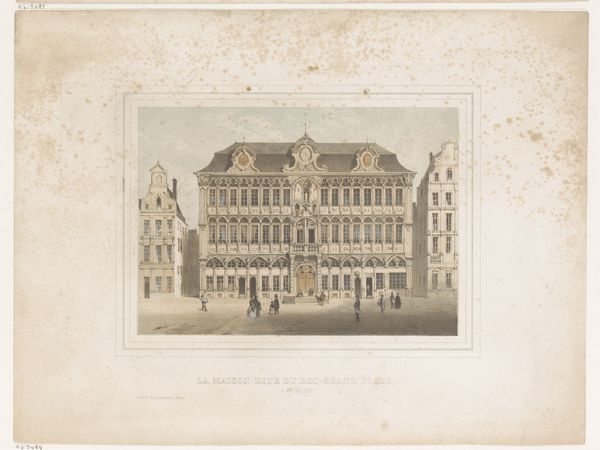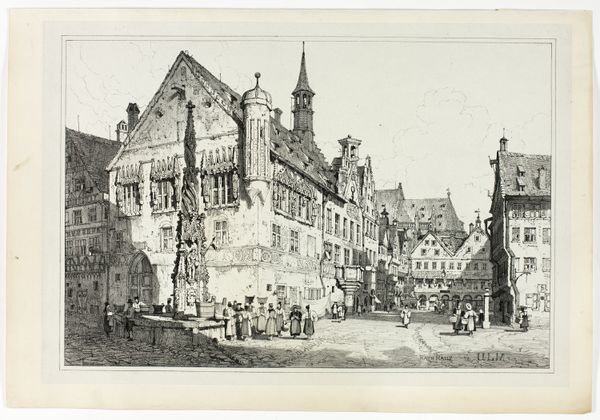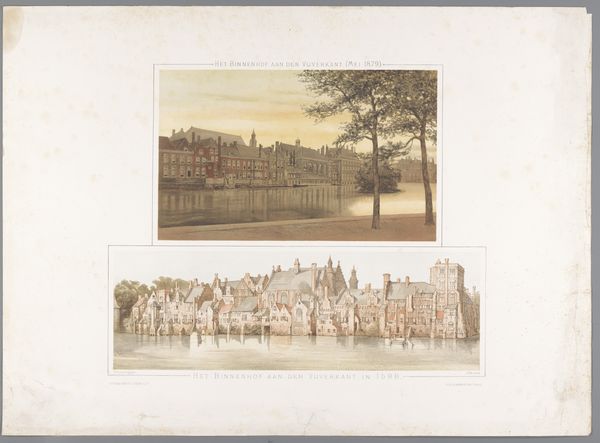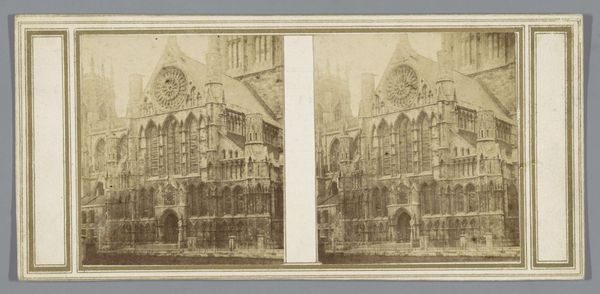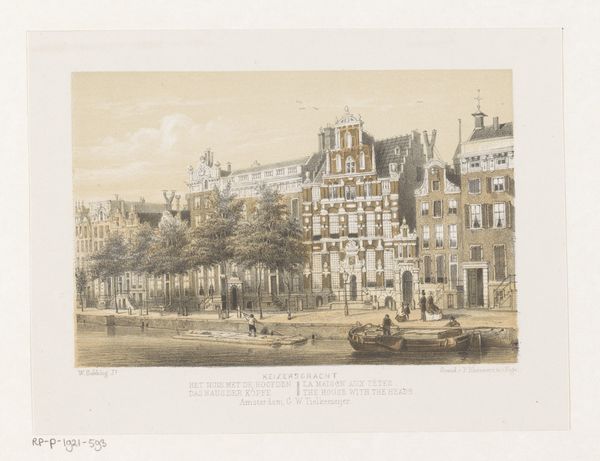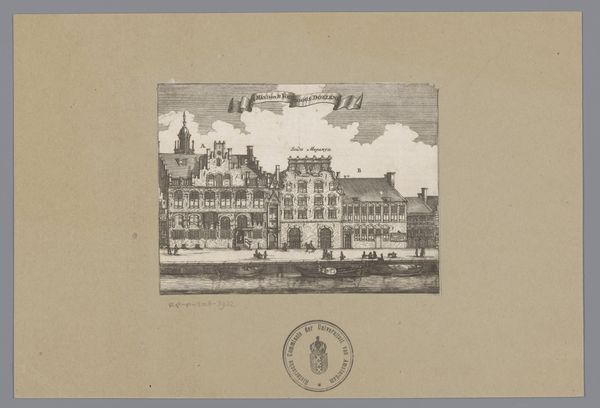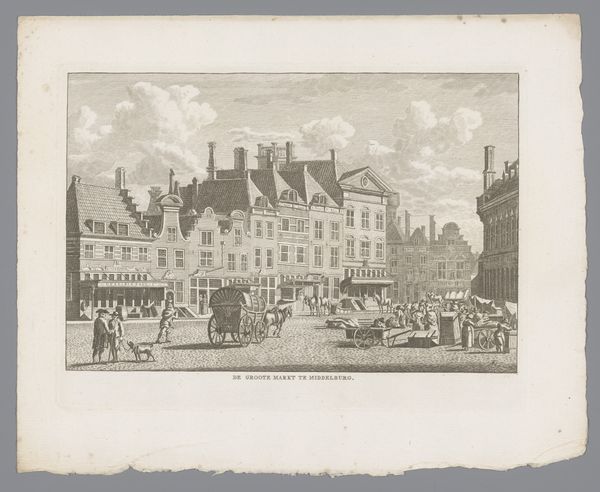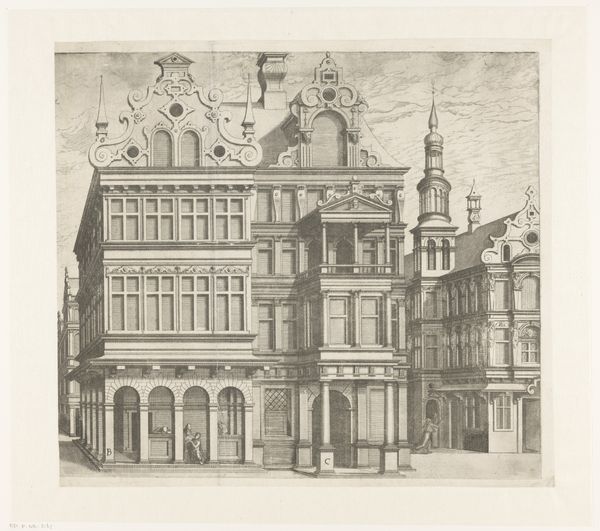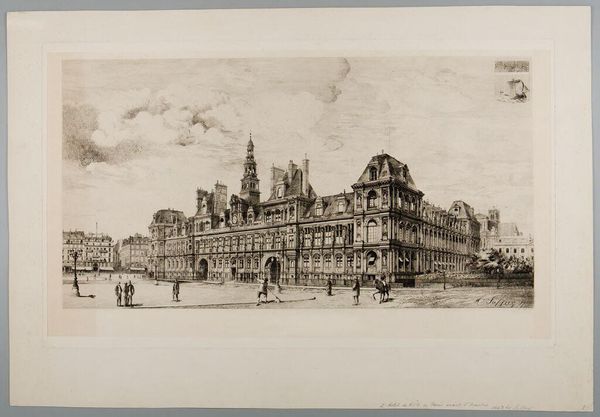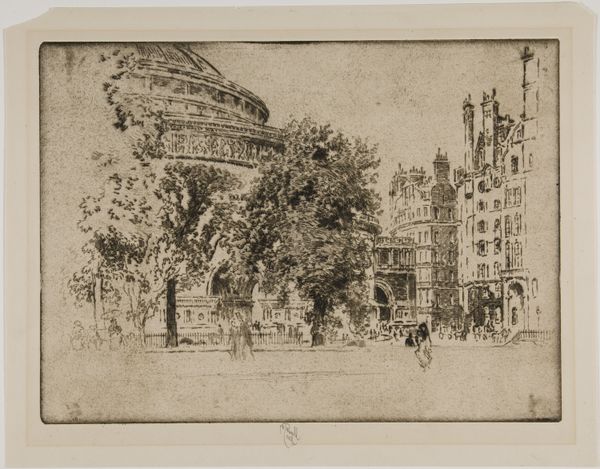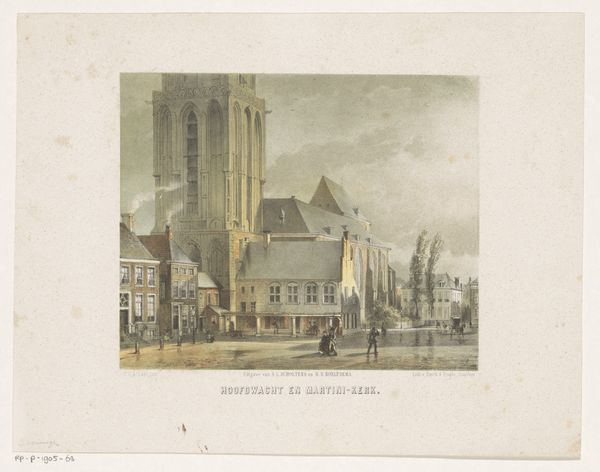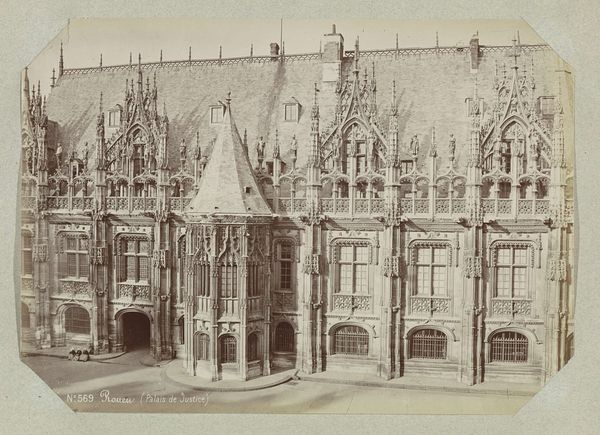
painting, watercolor
painting
landscape
watercolor
coloured pencil
cityscape
mixed media
Dimensions: height 183 mm, width 120 mm, width 240 mm, thickness 7 mm
Copyright: Rijks Museum: Open Domain
Curator: Immediately, I’m struck by the sense of serenity emanating from this watercolor. There’s a dreamlike quality to the architecture, even though it’s clearly a rendering of a real place. Editor: This work is entitled "Album met voorstellingen van het kasteel van Blois," created by Jan Petrus Ponstijn sometime between 1920 and 1940. The rendering uses watercolor and colored pencil, resulting in soft tonalities. The perspective seems almost staged. Curator: Staged is right. Note how the figures are carefully placed; the artist subtly guides our eye, employing individuals as signposts. Notice the choice of garb, which seems purposefully indistinct, allowing them to become universal figures. They symbolize the timeless relationship between people and monuments of power. Editor: Interesting. From a historical perspective, Blois held significant political weight as a royal residence and a site of important events, especially during the Renaissance. Royal imagery and emblems from its heydays had become part of the political discourse in France. Could this peaceful scene therefore conceal an undercurrent of socio-political nostalgia between the wars? Curator: It is possible. And yet the symbols are so subdued; there isn't a heraldic crest in sight. I read the scene as more psychologically resonant than explicitly political. The castle almost becomes a dreamscape, existing beyond its political function. Ponstijn transforms a symbol of political power into an almost fairy-tale ideal, the architecture itself reflecting aspiration. Editor: That's quite persuasive. The very lightness of the media further emphasizes this sense of ethereality and nostalgia. And, again, considering the historical and socio-political circumstances of its creation between the two wars, the picture projects anything but discord. Curator: Indeed, Ponstijn distills the castle down to a universally understood symbol of an enduring order in times of upheaval and violence. Editor: I see now how that reading resonates. It seems we are both drawn in, yet coming from our perspectives we are attuned to different symbolic undertones that together really enrich an appreciation of the scene. Curator: I completely agree. Thank you for the discussion!
Comments
No comments
Be the first to comment and join the conversation on the ultimate creative platform.
